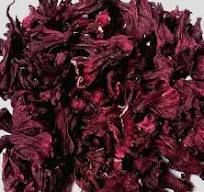Description
Hibiscus flower cultivation and export from Nigeria is an emerging and lucrative agribusiness opportunity. The global demand for hibiscus, driven by its health benefits, vibrant color, and versatility, has positioned Nigeria as one of the key players in the international hibiscus trade.
Hibiscus, scientifically known as Hibiscus sabdariffa and commonly called Roselle, is a tropical plant widely grown for its calyces, which are used to produce herbal tea, beverages, and medicinal products. The plant thrives in Nigeria due to its favorable climatic conditions and fertile soil.
Nigeria primarily cultivates the Roselle variety of hibiscus. This type is known for its deep red calyces, which are rich in anthocyanins, antioxidants, and vitamin C. The two main sub-varieties grown in the country include:
Hibiscus Sabdariffa var. Altissima: Grown for its tender leaves and stems, this variety is also used for fiber production.
Hibiscus Sabdariffa var. Sabdariffa: The more commonly cultivated type, it is valued for its bright red calyces used in teas, syrups, and other products.
Hibiscus cultivation in Nigeria involves several stages, from land preparation to harvest. Farmers rely on best agricultural practices to optimize yields and produce high-quality flowers suitable for export.
1. Land Preparation: Hibiscus grows best in sandy-loam soil with good drainage. Farmers clear the land of weeds and debris before plowing. Organic manure is often added to improve soil fertility and structure.
2. Planting: Hibiscus is propagated through seeds, which are planted directly in the field. The planting season typically begins with the onset of the rainy season, around May or June. Seeds are sown at a spacing of 60 cm by 60 cm to allow adequate airflow and sunlight penetration.
3. Fertilization: Farmers use a combination of organic and inorganic fertilizers to enhance crop growth. Organic compost, such as animal manure, is applied during land preparation, while nitrogen-rich fertilizers are used during the early stages of plant growth.
4. Pruning and Maintenance: Regular weeding and pruning ensure healthy plant development. Pruning helps in controlling plant size and promotes the growth of more branches, resulting in increased calyx yield.
5. Harvesting: Hibiscus plants are ready for harvest approximately three to four months after planting. The calyces are harvested manually by detaching them from the seed pod. Farmers must ensure timely harvesting to maintain the freshness and quality of the calyces.
Pests and diseases can pose significant threats to hibiscus cultivation. Common pests include aphids, thrips, and beetles, while fungal infections like leaf spot and powdery mildew are frequent disease challenges.
To combat these issues, farmers adopt Integrated Pest Management (IPM) techniques, such as:
– Regular monitoring of crops for early detection of pests and diseases.
– Applying organic pesticides and neem-based solutions.
– Practicing crop rotation to disrupt pest life cycles.
– Ensuring proper spacing to reduce humidity and prevent fungal infections.
Post-harvest practices play a crucial role in maintaining the quality of hibiscus flowers for export.
The steps include:
Drying: Fresh calyces are spread out in a clean, shaded area to dry. Proper drying prevents mold growth and preserves the vibrant red color.
Sorting and Grading: Dried calyces are sorted to remove impurities and graded based on size, color, and quality.
Packaging: The calyces are packaged in moisture-proof bags to retain freshness and prevent contamination.
Storage: Proper storage in cool, dry conditions ensures the product remains in optimal condition before export.
Nigeria is one of the world’s largest exporters of hibiscus flowers, with key markets in Europe, North America, Asia, and the Middle East. The vibrant red calyces are particularly sought after for their use in herbal teas, food coloring, and cosmetics.
The primary international markets for Nigerian hibiscus include:
Europe: Countries like Germany, Spain, and the UK import hibiscus for the herbal tea industry.
North America: The United States and Canada use hibiscus in health drinks and dietary supplements.
Asia: China and Japan incorporate hibiscus in beverages and traditional medicine.
Middle East: The region values hibiscus for its use in traditional drinks and culinary applications.
Exporting hibiscus requires a well-defined distribution and delivery strategy to ensure timely delivery and compliance with international standards. The process involves:
Compliance with Standards: Obtaining certifications such as HACCP, ISO, and organic certification ensures the product meets international quality standards.
Efficient Logistics: Collaborating with reliable logistics providers to handle transportation and customs clearance.
Bulk Packaging: Using appropriate packaging materials to protect the product during transit.
Partnerships: Partnering with export agents and distributors in target markets to streamline the supply chain.
Effective promotion is vital for establishing a strong foothold in the competitive global hibiscus market. Strategies include:
Digital Marketing: Leveraging social media platforms, websites, and e-commerce platforms to showcase the product’s benefits.
Trade Fairs: Participating in international trade fairs to network with potential buyers and distributors.
Branding: Developing a unique brand identity emphasizing quality, sustainability, and health benefits.
Direct Marketing: Engaging directly with beverage manufacturers, herbal tea companies, and retailers to secure bulk purchase agreements.
Content Marketing: Sharing educational content on the health benefits and uses of hibiscus through blogs, videos, and brochures.
The hibiscus cultivation and export business faces several risks, including:
Climate Risks: Unpredictable weather patterns can affect yields. Mitigation involves investing in irrigation systems and using resilient crop varieties.
Market Risks: Price fluctuations and demand changes can impact profitability. Diversifying markets and adding value to products can reduce these risks.
Logistical Challenges: Poor infrastructure and customs delays can disrupt deliveries. Reliable logistics partnerships and efficient planning are key.
Pests and Diseases: Crop losses due to pests and diseases can be mitigated through IPM techniques and regular monitoring.
Hibiscus flower cultivation and export from Nigeria present a promising opportunity for farmers, agribusinesses, and exporters. By adopting modern agricultural practices, adhering to quality standards, and implementing effective marketing strategies, Nigeria can strengthen its position as a leading exporter of hibiscus on the global stage.
Despite the challenges, the sector’s potential for growth and profitability makes it an attractive investment opportunity for stakeholders in the agricultural and export industries.


Reviews
There are no reviews yet.